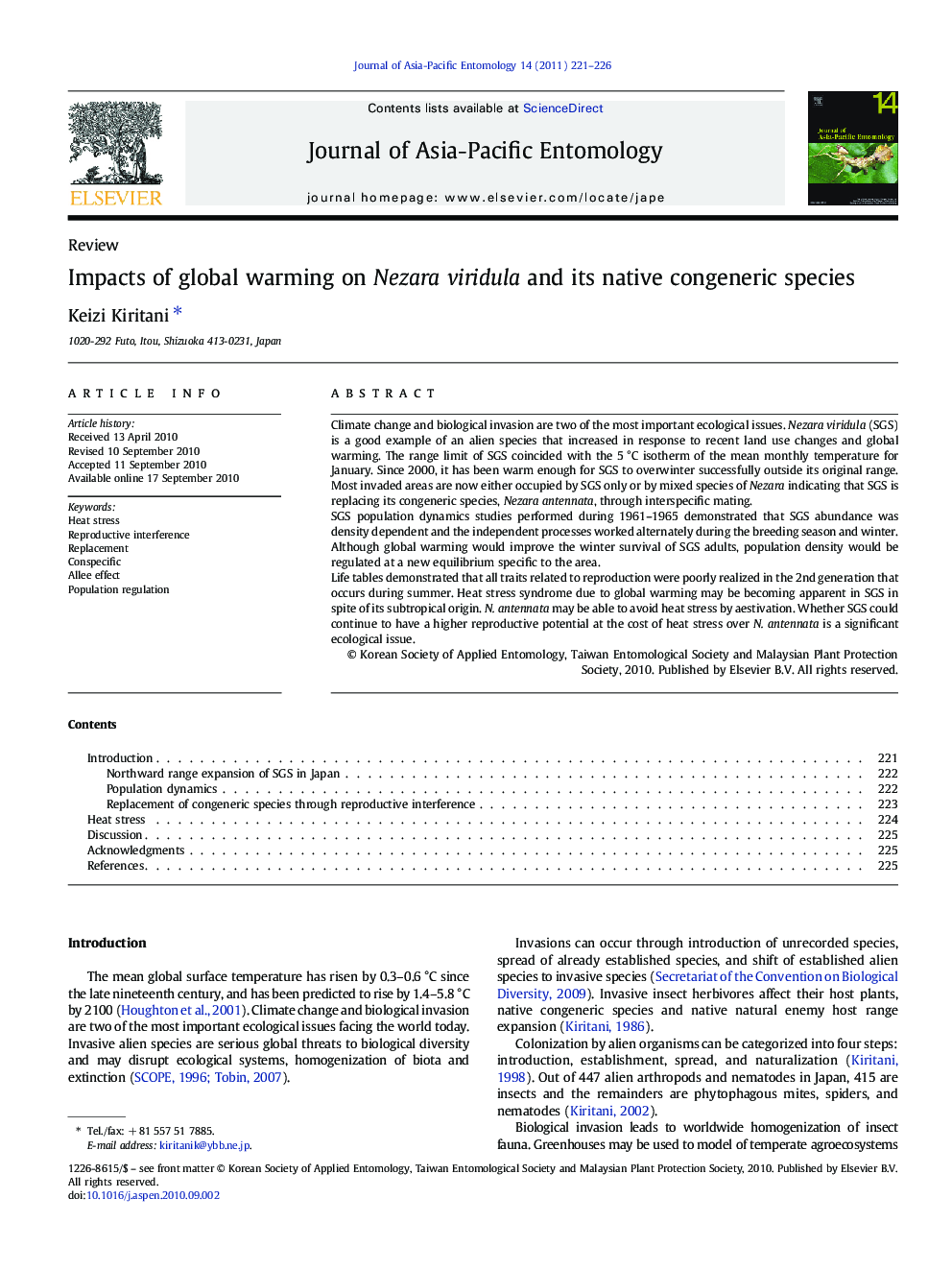| Article ID | Journal | Published Year | Pages | File Type |
|---|---|---|---|---|
| 4524920 | Journal of Asia-Pacific Entomology | 2011 | 6 Pages |
Climate change and biological invasion are two of the most important ecological issues. Nezara viridula (SGS) is a good example of an alien species that increased in response to recent land use changes and global warming. The range limit of SGS coincided with the 5 °C isotherm of the mean monthly temperature for January. Since 2000, it has been warm enough for SGS to overwinter successfully outside its original range. Most invaded areas are now either occupied by SGS only or by mixed species of Nezara indicating that SGS is replacing its congeneric species, Nezara antennata, through interspecific mating.SGS population dynamics studies performed during 1961–1965 demonstrated that SGS abundance was density dependent and the independent processes worked alternately during the breeding season and winter. Although global warming would improve the winter survival of SGS adults, population density would be regulated at a new equilibrium specific to the area.Life tables demonstrated that all traits related to reproduction were poorly realized in the 2nd generation that occurs during summer. Heat stress syndrome due to global warming may be becoming apparent in SGS in spite of its subtropical origin. N. antennata may be able to avoid heat stress by aestivation. Whether SGS could continue to have a higher reproductive potential at the cost of heat stress over N. antennata is a significant ecological issue.
